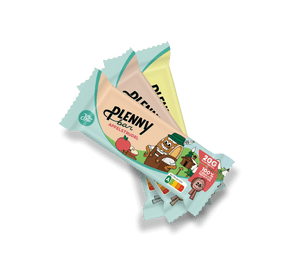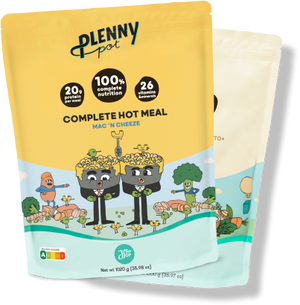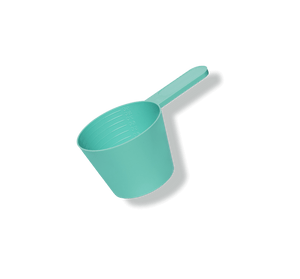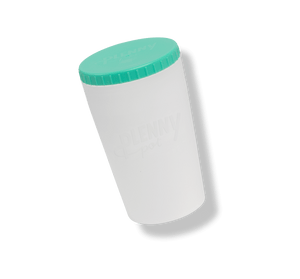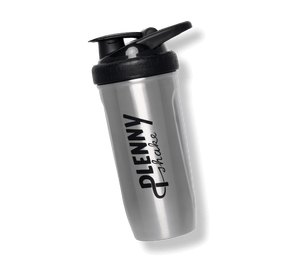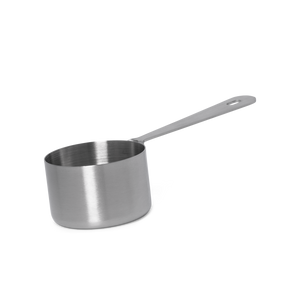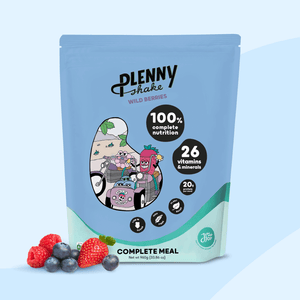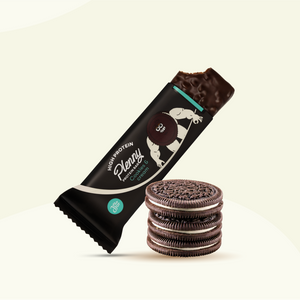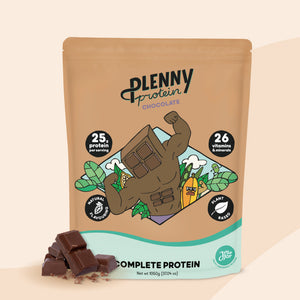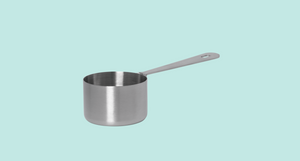Portion control is the act (or should we say art) of limiting the amount of food you’re eating to a single-serving size. Or in plain English: to keep yourself from stuffing your face until the button of your pants flies off.
And while portion control is essential, controlling every portion at every meal can seem quite overwhelming. Especially if you're unfamiliar with the serving sizes of the many, many different foods we consume.
But don’t fret! It’s actually not as hard as it seems, especially with our 10 simple tips for successful portion control.
But first: why does portion control matter?
Note: We don’t want to encourage anybody to eat less calories than they need. This article aims to provide you with tools to properly divide your daily calories throughout your day to avoid overeating on single meals. If eating enough calories in general is tricky for you, please check in with your doctor.
The 3 BIG Benefits of Managing Portions
When you eat without knowing how much food you’re exactly consuming, you may be getting too much or too little to meet your daily needs. But when you get your portions juuust right, three significant benefits can occur:
You’ll meet your daily calorie needs
Calories are more than just annoying numbers on packaging that tell you if you should or shouldn’t eat what’s inside. They are also essential to maintaining proper body function and high energy levels. And if you regularly over-or under consume calories, important systems in your body can become unbalanced, like when you and your pet chihuahua are on a seesaw together.
Daily calorie needs are different for every person, and range between 1,500 to 3,000 calories per day [1]. Your specific needs are influenced by your height, age, physical activity level, metabolism, taste in music, and can change over time. (Taste in music was a joke, we were just testing if you were still paying attention.)
To determine your personal calorie needs, read up on it or visit a nutrition professional, like a Registered Dietitian, to calculate your specific energy requirements [1].
You'll get additional health benefits
Besides meeting your calorie needs, managing portions can provide loads of health benefits, like [1]:
- Balancing your blood sugar levels
- Maintaining a stable metabolism
- Improving digestion
- Easing symptoms of intestinal upset during meal and snack times (i.e., stomach cramps, flatulence, bowel movement distress—we’ll spare you further examples)
- Stabilising your weight long-term
You'll save money at the grocery store
Regularly overeating can lead to a big grocery bill - especially if you consume a lot of fresh produce and other food marketed as ‘healthy’—which are typically more pricey. So managing your portions can result in a less full grocery cart. Makes it easier to race through the aisles too.
Now for our tips! Grab a paper and pencil, this will be on the test.
10 Simple Tips for Successful Portion Control
Practising effective portion control isn’t going to happen overnight, but with a little effort, you’ll be a master of the craft before you know it. To make integrating portion control into your meals and snacks easy, try these tips:

1: Begin with a food journal
Before you can effectively begin with portion control, it’s good to understand how much food you currently eat in a day. An excellent way to do this is to start a food journal or diary: a tool to determine how much food you eat in a day and the emotions you associate with this food [2]. You can use a notebook for this, and if you want to prevent excuses of the ‘I forgot my notebook’ variety, you can use an app like MyFitnessPal. (We’re going out on a limb here and assume you’re not likely to forget your phone. Are we wrong here? Didn’t think so.)
To start, track your eating patterns for one week and include the following information [2]:
- What food you ate, how much you ate (in weight and calories), and what time you ate it
- What you were doing while you ate (for example: sitting down with no distractions, watching TV, working at a computer, screaming at pigeons from your window, etc.)
- Describe your mindset while eating (for example: stressed, irritated, uninterested, etc.)
- How the food made you feel (for example: happy, content, guilty, etc.)
At the end of the week, evaluate your daily food intake. Compare the results to your daily calorie needs and recommended food portion sizes. This may be confrontational, but you can always wipe your tears away with the donut you won’t get to eat now. And hey, you’ve learned something!

2: Try intuitive eating
Intuitive eating (also known as “mindful eating”) is the activity of engaging in the practice of eating food on a mental, emotional, and physical level [3]. So basically: not inhaling your food mindlessly (resulting in finishing your popcorn before the movie has even started).
But how does it work? These guiding principles of intuitive eating can help you [3]:
- Honour your hunger and health
- Discover satisfaction
- Feel your fullness
- Cope with your relationship with food
- Respect your body
Managing portions is not a central focus of intuitive eating, but it helps you understand how much food your body needs, and teaches you how to honour those feelings.

3: Start with a glass of water
Drinking at least half a litre of water before every meal or snack will keep you hydrated, increase your fullness, and reduce your hunger [4].
Research has found that drinking a glass of water 30 minutes before eating will help us distinguish between hunger and thirst [4], because apparently we’re just stupid primates who can’t tell the difference. Slurping down a bunch of water helps us control our portions and reduce the chance of overeating.

4: Take it slow
Eating more slowly increases your awareness of satiety signals from your body.
Consuming food mindlessly or too quickly decreases the awareness of being full. It takes your brain at least 20 minutes to register whether the food you’ve eaten has met your body’s energy needs [5]. So, if you’re eating fast, overeating is likely to occur.
Slowing down your eating speed gives your body – specifically the gut – and brain time to communicate your level of fullness [5]. So put your fork down sometimes! Give them a break! Cutlery needs rest too!
Try these strategies to slow down your eating [5]:
Don’t eat while distracted (i.e., while working, using electronics, watching TV, listening to a fascinating podcast about the mating habits of bats, etc.)
- Avoid eating on the go
- Take your time to eat and enjoy your meals
- Take small bites
- Chew carefully before swallowing
- Practice intuitive eating techniques

5: Eat more foods that keep you full longer
Foods that keep you feeling full for a longer period of time help with portion control by decreasing your hunger throughout the day.
The most effective foods in increasing long-term satiety are high in fibre, protein and healthy fats. You can also go for ‘high volume’ foods that contain lots of water or air per serving [6]. Specifically, fibre slows stomach emptying and increases digestion time, while protein and fat provide the appetite-controlling hormones ghrelin and GLP-1 (that both sound like a cough) [6].
Foods that can boost your fullness for long periods are [6]:
- Eggs
- Watery fruits and vegetables (like watermelon or cucumber)
- Nuts and seeds
- Oatmeal
- Fish and lean meats
- Beans and legumes

6: Don’t eat from the container
Are you ever eating from a bag of crisps and you’re starting to feel very full but the bag is almost empty so you just keep wolfing it down? Eating from a container or some packaging that contains multiple servings reduces your awareness of appropriate portion sizes. It’s possible that eating from oversized containers can prompt you to consume up to 129% more food than usual [7]!
To avoid overeating due to bulk portions, try:
- Measuring out servings with utensils or a scale before cooking
- Portioning before serving and packing away the rest before eating
- For snacks: put some into a bowl and store the rest for later

7: Pick a smaller plate
The larger the plate, bowl, or cutlery you use for meals, the more you’re likely to eat.
Larger dinnerware has a subconscious effect on the food you eat and decreases the feeling of fullness by giving the illusion that the portion is smaller. Yes, our brains are that gullible. Most times, this illusion can lead to overeating – by up to 77% – without us having any clue that we’re eating more than usual [8].
Swap your dinnerware and silverware for a smaller size to help you maintain accurate servings and increase satiety to fix this portion issue. Off to the leprechaun store!

8: Learn the portion sizes of different foods
Understanding portion sizes can seem overwhelming, but it’s actually not that hard if you know what suitable portion sizes are for different food groups. By measurement, these are [9]:
- Proteins: 3 oz (85 g)
- Grains and high-carb foods: 3 oz (40 g)
- Fats and oils: 1 oz (16 g)
- Vegetables and fruits: 4 - 8 oz (75-150 g)
Suppose you don’t have access to measuring utensils, or you have an irrational fear of using them. In that case, visual measurements based on the size of your hand can be a nice, rough reference. Such as [10]:
- Proteins: Palm-sized serving
- Grains and high-carb foods: Cupped-hand serving
- Fats and oils: Thumb-sized serving
- Vegetables and fruits: Fist-sized serving

9: Enjoy smaller servings in restaurants
Foods served at restaurants typically come in huge portions. On average, the standard restaurant portion per plate is 2.5 servings, and can be even larger [11]. If dining out is something you like to do, that’s fine. Live your life! Spend that hard-earned money! Just be aware that large restaurant servings can make controlling your portions difficult.
Here are some ideas to limit your portion sizes when eating out, that most restaurants will happily accommodate:
- Request a half portion of your order
- Order a children’s dish
- Order a starter or side as a main dish
- Share a full meal order with someone else (and if you don’t have the same taste, have a rap battle to decide who gets to choose)

10: Consider portion control food products
When you’re in too much of a hurry to prepare meals or have to eat on the go, you may not have enough time to focus on portion control.
In this case, there’s always portion-controlled food products to count on. Just make sure you are purchasing them from a company that creates high-quality and nutritionally complete products. Like us! Jimmy Joy! We do that! Just have a look at our portioned meal shakes, meal bars, or meal kits.
With 400kcal per meal and the exact measurements of all the nutrients that are in it, you know exactly what and how much you're eating.
Practice Portion Control Today!
We hope these 10 simple tips have shown you that managing the portions of food you eat at meals or during snack time doesn’t have to be complicated. You can integrate it into your life slowly. In the long-term portion control will provide you with lots of health benefits, and a huge decrease in the number of buttons that fly off your pants.
Author:

 Everything You Need In One Meal
Everything You Need In One Meal
 Stay Full For 3-5 Hours
Stay Full For 3-5 Hours




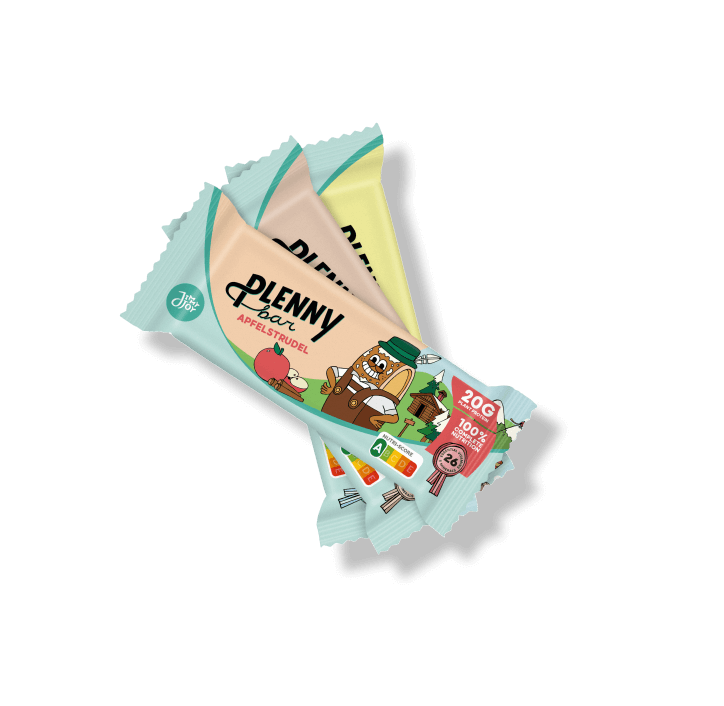



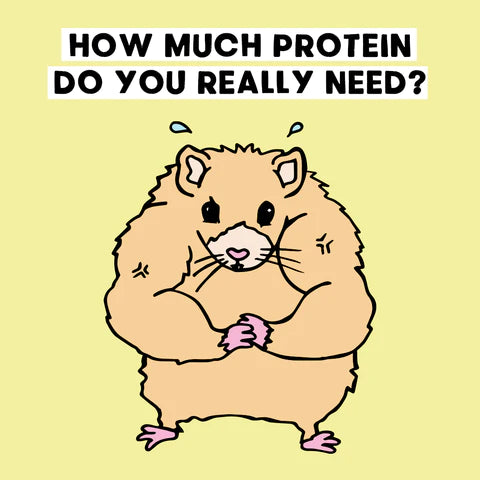




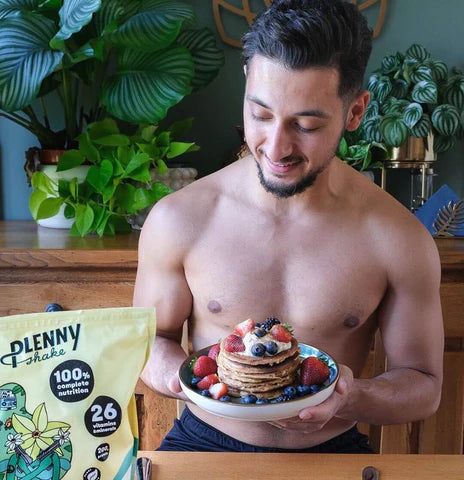






 Product added to cart
Product added to cart


